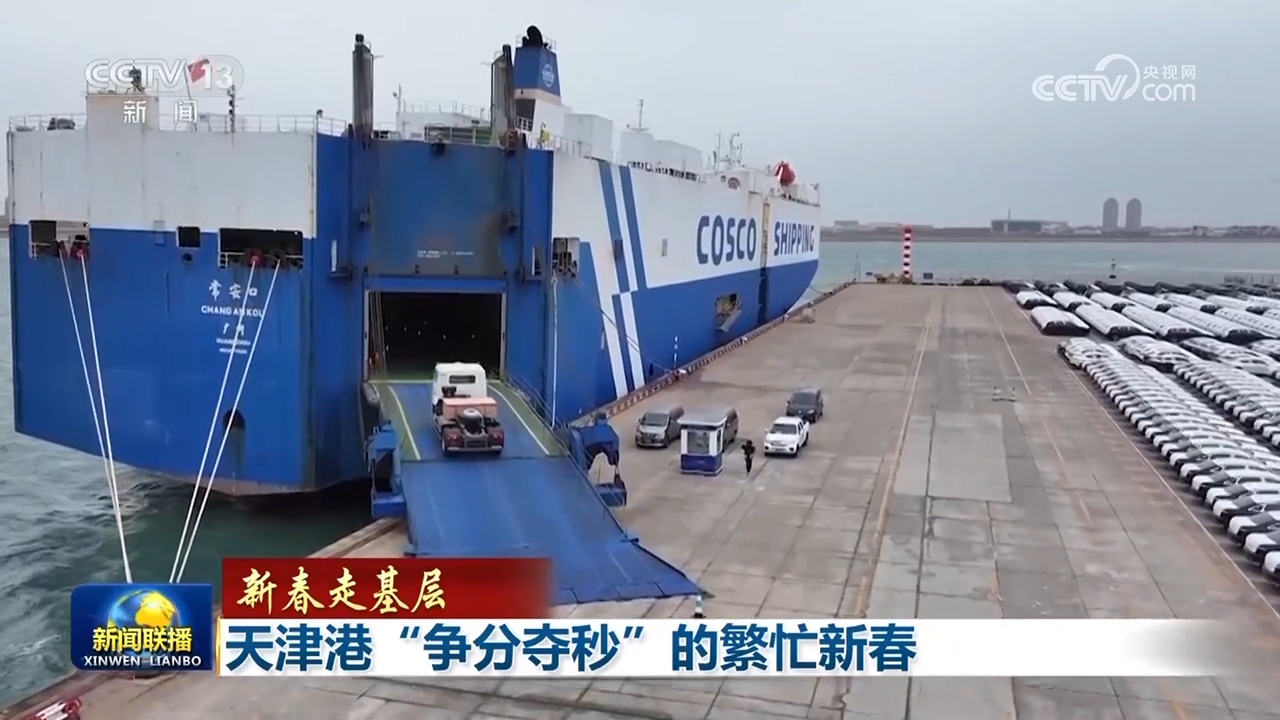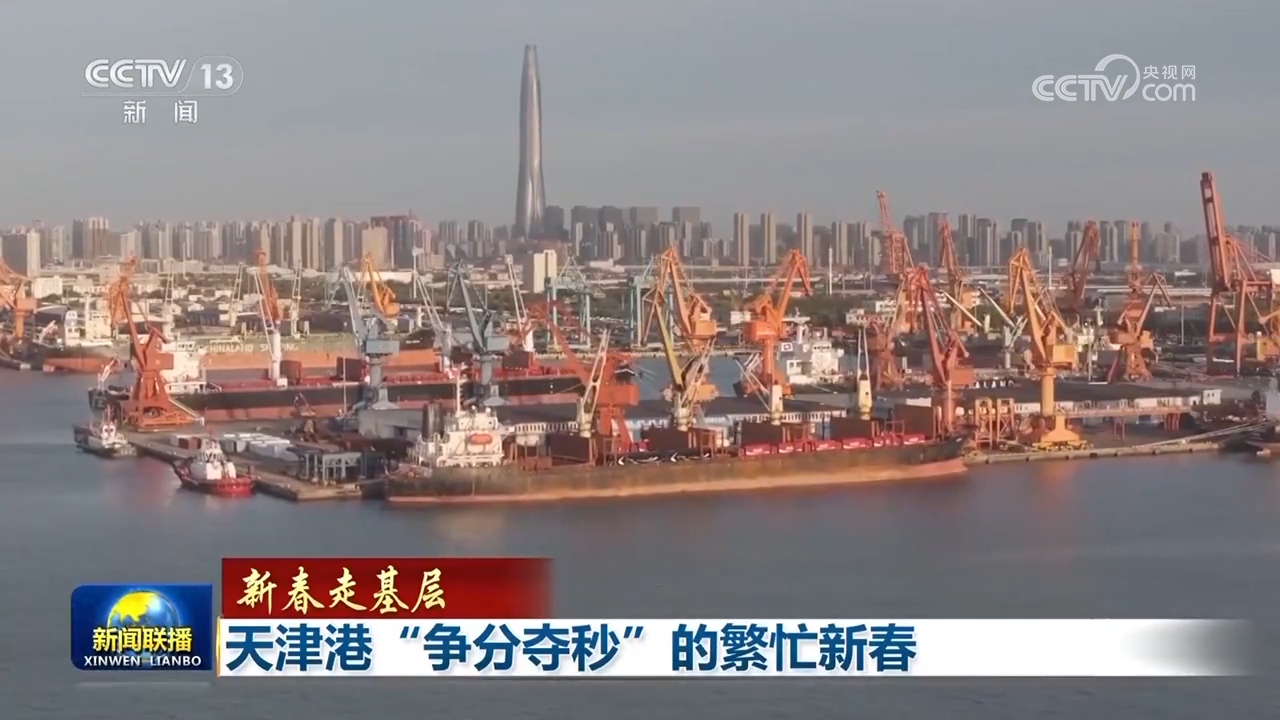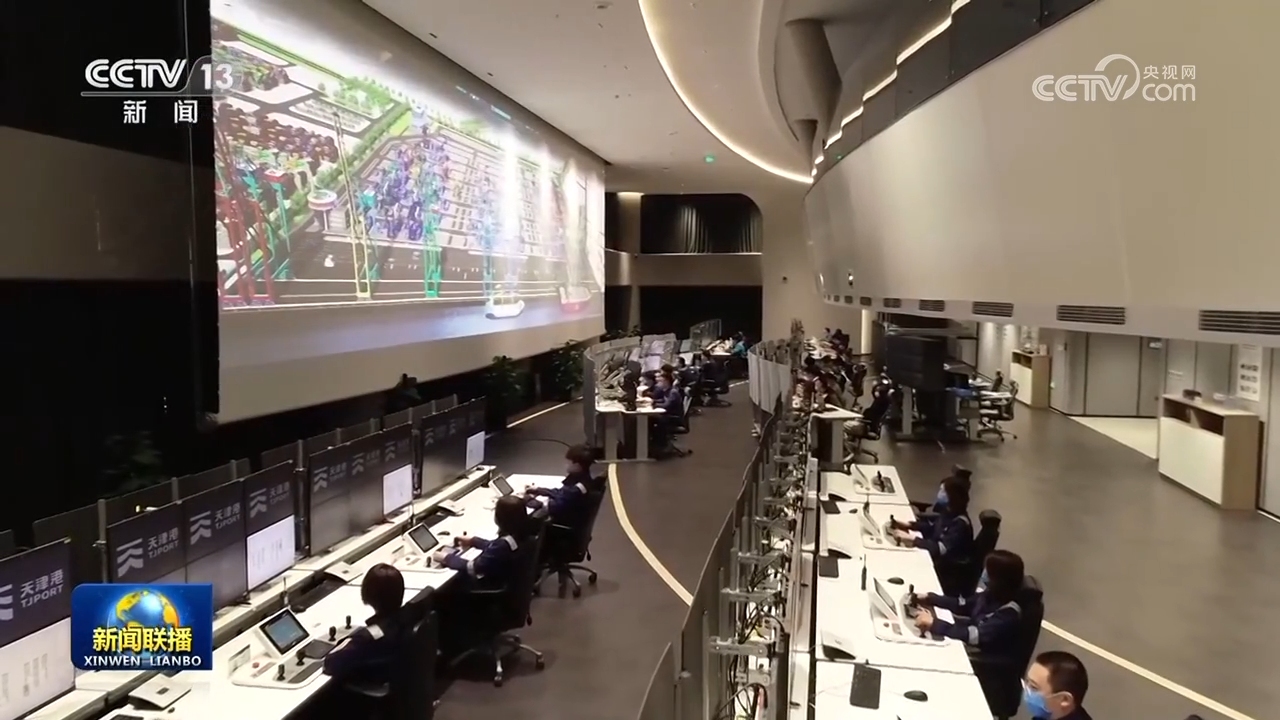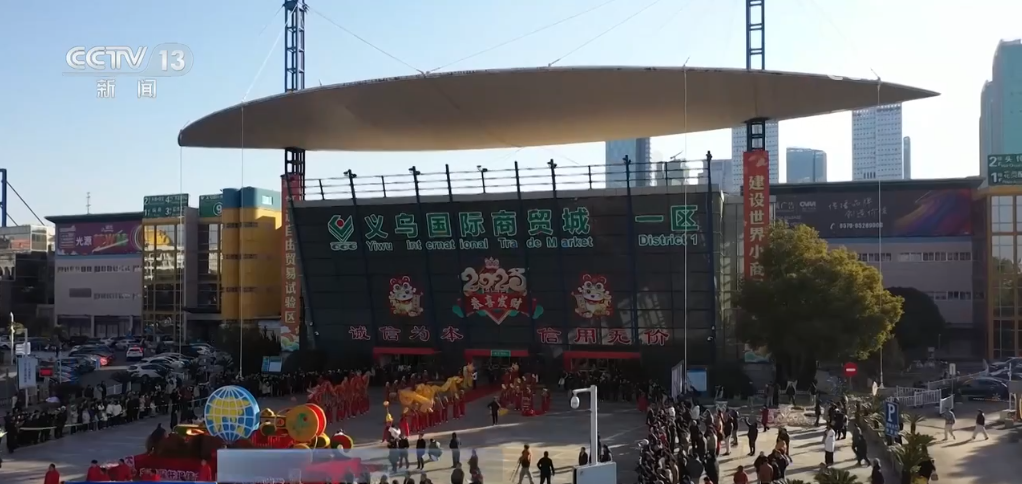CCTV News (News Network): On February 9, "Going to the Grassroots" of "New Year's Day", we followed reporters from the Central Station to enter Tianjin Port, which was busy with the beginning of the year.
When the reporter came to Tianjin Port, the largest comprehensive port in northern my country, he was about to catch hundreds of new cars from the Global Roll-Ro-Wait to load the ship and prepare to ship to the Persian Gulf. This operating route from Tianjin Port to the Middle East was first opened after the Spring Festival this year.

Dispatch Director Jin Hao kept paying attention to the progress of the ship loading. Shortly after the ship was docked, the meteorological department issued a yellow warning for strong sea winds, and the maximum gust of the night would reach level 10. Once the ship did not have time to leave the port before the wind blew and closed, the maritime logistics may even be delayed for several days. To this end, the port launched an emergency plan for severe weather, and Jin Hao also adjusted his manpower in time and accelerated his operations.
Riding against time and speeding up operations, the freighter finally left Tianjin Port before the port was closed. At this time, the wind in the port became heavier and the temperature dropped to minus 10 degrees Celsius.

Jin Hao breathed a sigh of relief when he returned to the car. Although nervous, he feels very accomplished. He said that thanks to the joint construction of the "Belt and Road" and the coordinated development of Beijing, Tianjin and Hebei, the number of routes and export volume of Tianjin Port have both increased, and have reached more than 500 ports in more than 180 countries and regions around the world.
Backing the dispatch center, Jin Hao began to get busy with the next ship that was about to enter the port. How to solve the bottlenecks that affect operations and make sea logistics faster? At the Tianjin Port smart terminal a few kilometers away, Feng Miao's team is also busy researching and improving operational efficiency, and the software optimization of the smart terminal is also "rattling against time".

Initiating research towards "0.2 seconds", Feng Miao and his colleagues quickly solved this problem by improving algorithms, optimizing operating processes, etc. Feng Miao said that in fact, in the process of building this "smart zero-carbon" terminal, more than a dozen problems that affect efficiency have been successfully optimized.
Riding against time to improve quality and efficiency. With the support of the national comprehensive freight hub to supplement and strengthen the chain, this year, Tianjin Port also established a big data management center and released a "zero carbon port area" construction plan, which will introduce a batch of new digital equipment, and the port's intelligence and green level will be further improved.


